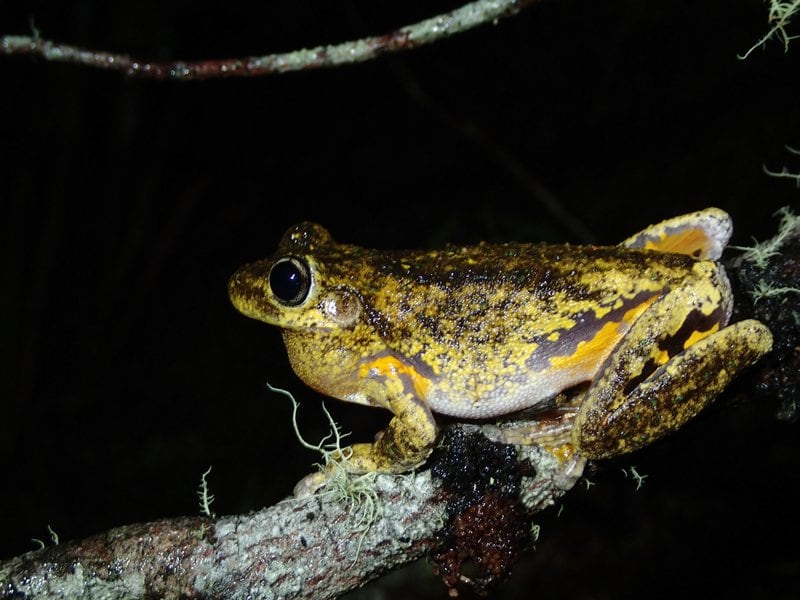A guide to making a frog hotel with frog expert Jodi Rowley

IN 2018, FROG hotels became a social media hit when the Barkly Landcare and Conservation Association, located in the Northern Territory, posted an image of their installation flooded with guests.
The group’s secretary, Stephani Grove, decided to try out the design as her toilet was consistently flooded with froggy friends.
“I arrived at the station and was confronted by all these little green tree frogs in my shower, in my toilet, hopping and hitching a ride against my leg when I was walking around my corridors,” Stephani told the ABC.
“I thought this has got to stop, so I looked into some frog hotel designs and found one on the Queensland Museum’s webpage.”
Because Australians have been ordered to remain indoors to prevent the spread of COVID-19, now’s the perfect time to spend some time creating a frog hotel.
The Australian Museum’s frog expert Jodi Rowley, who has frog hotels herself, says it’s the perfect activity to take up right now.
“It’s such a good way to provide extra habitat for frogs. Not to mention, plenty of frogs are bunkering down for the winter right now.
“I’m getting a lot of reports of people saying their frogs are trying to come inside at the moment. People are now noticing they’re gathering in fence and pool posts, and any kind of holes.”
The hotels are strictly for tree frogs, Jodi explains. Any other kind of frog wouldn’t manage to find its way out. Around Sydney, the Peron’s tree frog is the most common, but you may also find bleating tree frogs or green tree frogs.
Depending on the size of your garden you can always use old bath tubs or prefabricated ponds from hardware stores. Ponds are where frogs breed, while frog hotels are where they shelter.
If you’re looking to attract the more common frogs around cities, it’s important to provide them with a way to get out of the pond. Steep sides will create trouble for the frog when it tries to exit.

As for the frog hotels, it’s important to make these enticing.
“The point of a frog hotel is to provide a safe hiding place, so it’s important to position them out of the sun, in a moist area,” Jodi says.
Once you’ve sorted out exactly where you’ll place them, it’s time to gather your materials. Jodi recommends using PVC pipes, which you can also buy from hardware stops.
When it comes to how many frog hotels you should build, it’s a matter of how much space you have in your backyard. Some people choose to build just two, others cluster six hotels or so.
You then have to cut the PVC pipe to an appropriate size (most people go for around 60cm; that’s two lengths of your average ruler). And stick them into the ground, burying them around 15cm deep to create the perfect dark, moist microclimate.
If you don’t want to place your frog hotels in the ground, you can always simply place them in a bucket with some water or a small garbage bin.
It can take some time for frogs to show up, but when they do, it’s a great opportunity to monitor and learn more about your local amphibians. Don’t forget to log all your data with the FrogID app.
“Scientists actually use hotels as a survey technique so they can closely monitor and find out more about a particular frog species,” Jodi says.
Jodi also recommends spending time decorating your hotel. Although it doesn’t make a difference to the frogs, it’s a good opportunity to beautify your garden.
“I used green spray paint to decorate mine, but any kind of non-toxic paint is fine. Also make sure that it’s dry by the time you place them.” Get creative!


